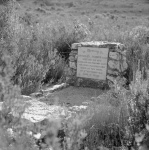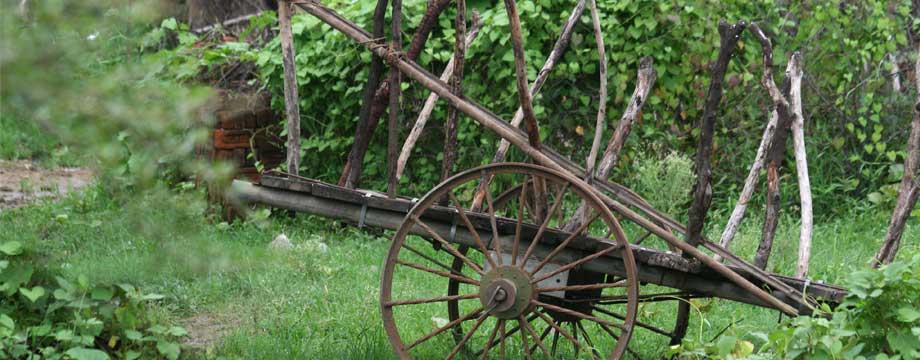
Grave of Critchley Parker Junior, Port Davey Tasmania.
Photo courtesy of The State Library of Tasmania
Just south of St. George’s Road in Upper Beaconsfield is a beautiful bushland park known as Critchley Parker Junior Reserve. Most residents know it as the area is where twelve firefighters perished during the devastating Ash Wednesday bushfires. If you walk through the park, you will see a moving memorial to the men and women who gave their lives on that fateful day. The bushfires overshadowed all else and it was only recently that I started wondering about the unusual name of the reserve and who Mr. Critchley Parker Junior was. What I found, left no doubt in my mind that Mr. Critchley Parker Junior was eminently qualified to be included in the Odd History hall of fame.
Critchley Parker Junior was the only son of Ernest Frank Critchley Parker (who went by the name of Frank and later used Critchley as his first name). Frank was a self made publishing magnate who inspired controversy during the First World War. He was outspoken and controversial and his beliefs regarding pro-conscription and anti-Irish Catholicism managed to upset quite a few people. As a publisher he owned a few different newspapers but he was also a book and pamphlet printer. Twice he was convicted and fined for libel yet he continued to publish his “patriotic pamphlets”.
Frank married his second wife, Kathleen Kerr, in 1910 and was 49 years old when his son Critchley Parker Junior was born in 1911. In 1933, Frank and Kathleen built an impressive home in Upper Beaconsfield. The house faced onto St. Georges road and the land which was to become Critchley Parker Reserve lay just to the south. The architects for the house were Mewton and Grounds, well known for their interesting and modern designs. In the 1970’s this interesting and unusual home was owned by Charles and Yvonne Wilson until it was lost in the Ash Wednesday bushfires.
Critchley Parker Junior was born into a life of luxury. He was wealthy, romantic and intellectual. Although a keen bushwalker he also suffered from a weak chest. In 1940 he fell in love with an older married woman, a Jewish journalist named Caroline Isaacson. As knowledge of the Jewish extermination during the second world war became public, he and many others rallied for the resettlement of those of Jewish faith to a new homeland state. The plan was for a massive group settlement with infrastucture in remote Australia. Originally a site was touted in the north of Western Australia but the idea was shelved as the Japanese threat to Darwin escalated. Critchley began pushing for the Port Davey region in the rugged south west coast of Tasmania. In 1941 he and a party of men including Dr Isaac Steinberg (a Russian politician and leader of the Freeland League) visited Tasmania and came away with the plan for the new Jewish homeland in the southern state.
In March of 1942, Critchley decided to embark upon his own survey of the Port Davey region. He enlisted the help of Charlie King (the only resident of the area) to take him up river, where he was left by himself with a tent and limited supplies. They arranged a signal whereby if Critchley was in trouble he could signal for King by lighting two fires of buttongrass. Within days the weather turned bad and Critchley lit his fires. The mist and rain was so thick that Charlie couldn’t see it and Critchley ran out of matches. Sick with pleurisy and out of supplies Critchley died three weeks later. Four months passed before his body was discovered by a man named Clyde Clayton and his dog. His body was still in his sleeping bag but surrounded by plans and notes for the new Jewish homeland.
His designs were for a socialist state in the rugged southwest. He planned for a centre of manufacturing, producing perfume, fancy goods, jewellery and furs by the displaced people of France. Those people coming from Holland would be employed in drainage and dykes, and there would be German style freeways taking goods to Hobart. The utopian style development would receive it’s wealth from farming and mining. Although his plans were far fetched and possibly misguided, he had a very real ambition to save the Jewish people during one of the most horrific times in recent history.
In 1948, six years after Critchley died, the love of his life, Caroline Isaacson, purchased and became editor and reporter for the Dandenong News. She remained married to her husband until his death in 1960.
Critchley died when he was just 31 years old. His father died two years later and sometime during the next decade the land in Upper Beaconsfield was donated to the shire and named Critchley Parker Junior Reserve.
Relevant Critchley Parker Junior Links

